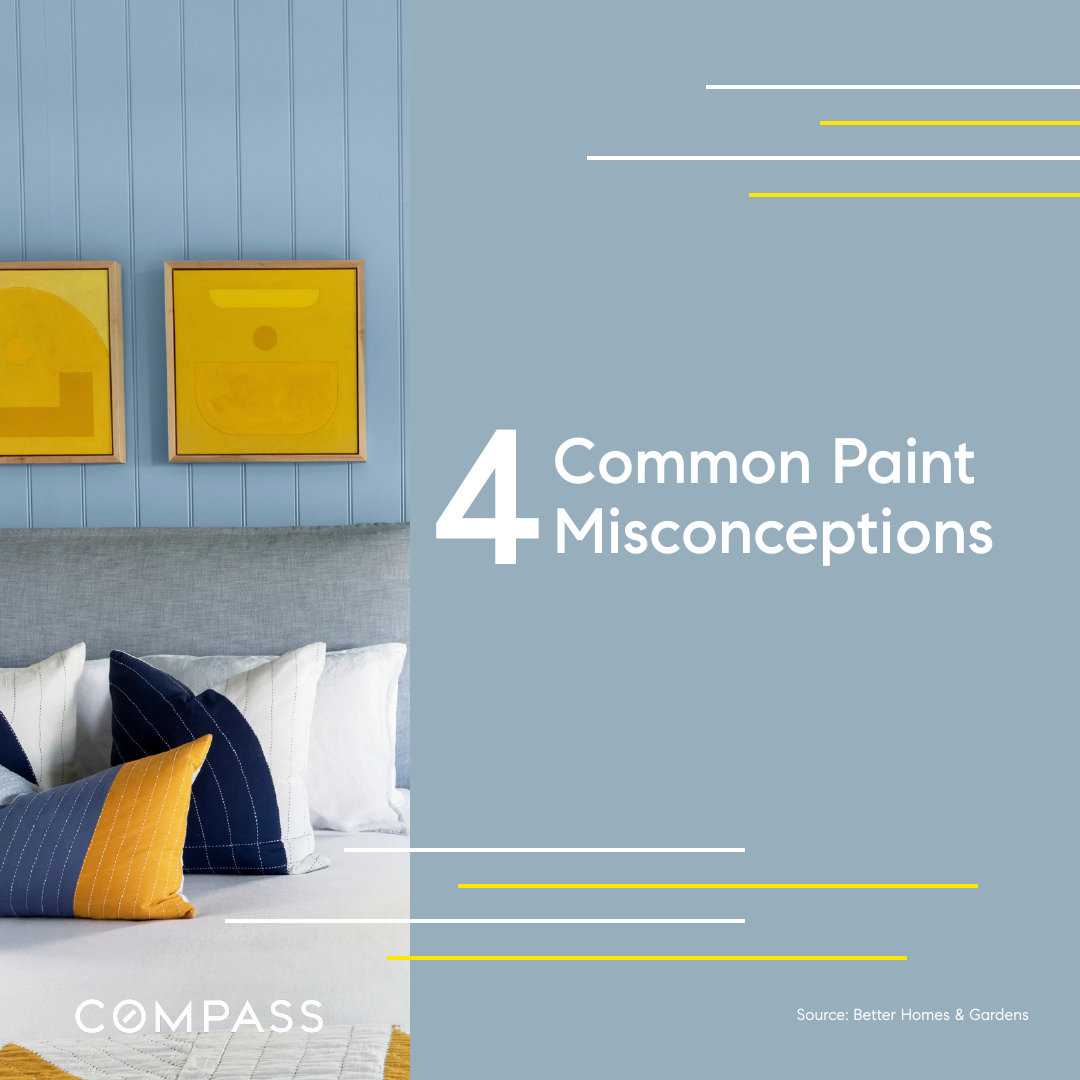Brushing Aside Misconceptions: 4 Paint Facts You Need
Painting is like a magic wand for changing how a room feels. The stroke of a brush can turn a mundane room into a sanctuary of style, an expression of personality, or even a canvas for creativity. But there are some misconceptions about it that we need to clear up. In this journey, we'll look at four common paint myths that are all about picking the right colors. These myths might have fooled many, but we're here to shed light on these misbeliefs that can hinder our design choices.
Let's get ready to learn as we set out on a journey to reimagine our living spaces.
Misconception 1: Dark Walls Shrink Your Space
One of the most persistent misconceptions about paint is the idea that using dark colors on your walls will make a room feel smaller and cramped. It's as if we've been conditioned to believe that light, airy colors are the only way to create an illusion of space. However, this couldn't be farther from the truth.
In reality, dark walls can actually add depth and sophistication to a room. When used thoughtfully, deep shades can create a cozy and inviting atmosphere. The key lies in understanding how to balance dark colors with other design elements like lighting, furniture arrangement, and accents. By debunking this misconception, we open up a world of possibilities for creating unique and stylish living spaces that challenge the norms. It's time to embrace the allure of the dark side!
Misconception 2: The Trim Dilemma: Wood or White?
Another common misconception in the realm of paint revolves around trim color. It's often believed that trim should be limited to either classic stained wood or crisp white paint. This rigid viewpoint can limit the creative potential of a space and stifle the harmony between various design elements.
In reality, trim color isn't confined to just these two options. There's a vast spectrum of colors that can complement your overall design scheme. The key is to consider the room's aesthetic, the colors of your walls and furnishings, and the mood you want to evoke. By expanding our understanding of trim colors, we open up exciting avenues for personal expression and design cohesion. It's time to break free from the trim dilemma and embrace a more diverse palette of possibilities!
Misconception 3: Vibrant Paint Fixes Dark Rooms
It's a common belief that painting a dark room with vibrant, bold colors will instantly brighten it up. However, the reality is more intricate. When natural light is scarce, applying a vivid wall color can create a stark and jarring contrast. To enhance the room's appeal, opt for light colors with white undertones, rather than shades subdued by gray which can appear shadowy. Pair this with the strategic addition of multiple light sources to infuse the space with the desired vibrancy. This balanced approach ensures that your dark room not only gains brightness but also radiates a soothing and harmonious atmosphere.
Misconception 4: All Whites Are Created Equal
One of the most misleading assumptions about paint revolves around the simplicity of white. Many believe that all white paints are essentially the same, leading to a careless choice of shade without considering the intricacies of undertones.
In reality, the world of white paint is rich and diverse, with countless variations that can drastically affect the mood and appearance of a room. The subtle undertones – warm, cool, neutral – play a pivotal role in how the white will interact with lighting and surrounding colors. Neglecting this aspect can result in unintended clashes or a space that feels stark and clinical. By understanding the complexities of white, we can make informed selections that harmonize with our design vision, ultimately transforming spaces into serene, cohesive environments.
Expert Tips for Paint Perfection:
Sample First: Always test paint colors on a small area of your wall before committing to a full application. Lighting conditions and surrounding elements can greatly affect how a color appears.
Consider the Big Picture: Think beyond individual walls. How will the chosen colors interact with your furniture, decor, and adjacent rooms? Strive for a cohesive flow throughout your space.
Natural vs. Artificial Light: Keep in mind that natural light and artificial lighting can alter how colors look. Consider the different lighting sources in your room when selecting paint shades.
Undertones Matter: Pay attention to the undertones of your chosen colors. Warm undertones can create a cozy feel, while cool undertones can lend a refreshing vibe.
Take Your Time: Design is a journey, not a race. Take the time to explore different options, gather inspiration, and fine-tune your choices.
As we wrap up our journey through the world of paint misconceptions, we've encountered a palette of truths that can reshape how we approach design choices. From the notion that dark walls shrink space to the belief that vibrant colors fix dim rooms and the assumption that all whites are equal – these misconceptions have guided many astray. But armed with newfound knowledge, we can paint our living spaces with confidence and creativity.
Remember, design isn't just about following rules; it's about exploring possibilities. By challenging these misconceptions, we empower ourselves to think outside the box and create rooms that reflect our unique personalities. So, the next time you pick up a paintbrush, let these lessons guide you toward a world of vibrant, nuanced, and inspired interiors.
Furthermore, homeownership brings an additional layer of benefits when it comes to personalization. Unlike rented spaces, owning a home provides you with the freedom to fully embrace personalized decorations and designs. From experimenting with paint colors that resonate with you to curating a space that embodies your essence, the canvas is yours to fill.
If navigating the world of homeownership seems daunting, remember that we're here to support you every step of the way. Feel free to reach out for guidance and assistance on your journey toward creating a home that is distinctly yours!
Source: Better Homes & Gardens





